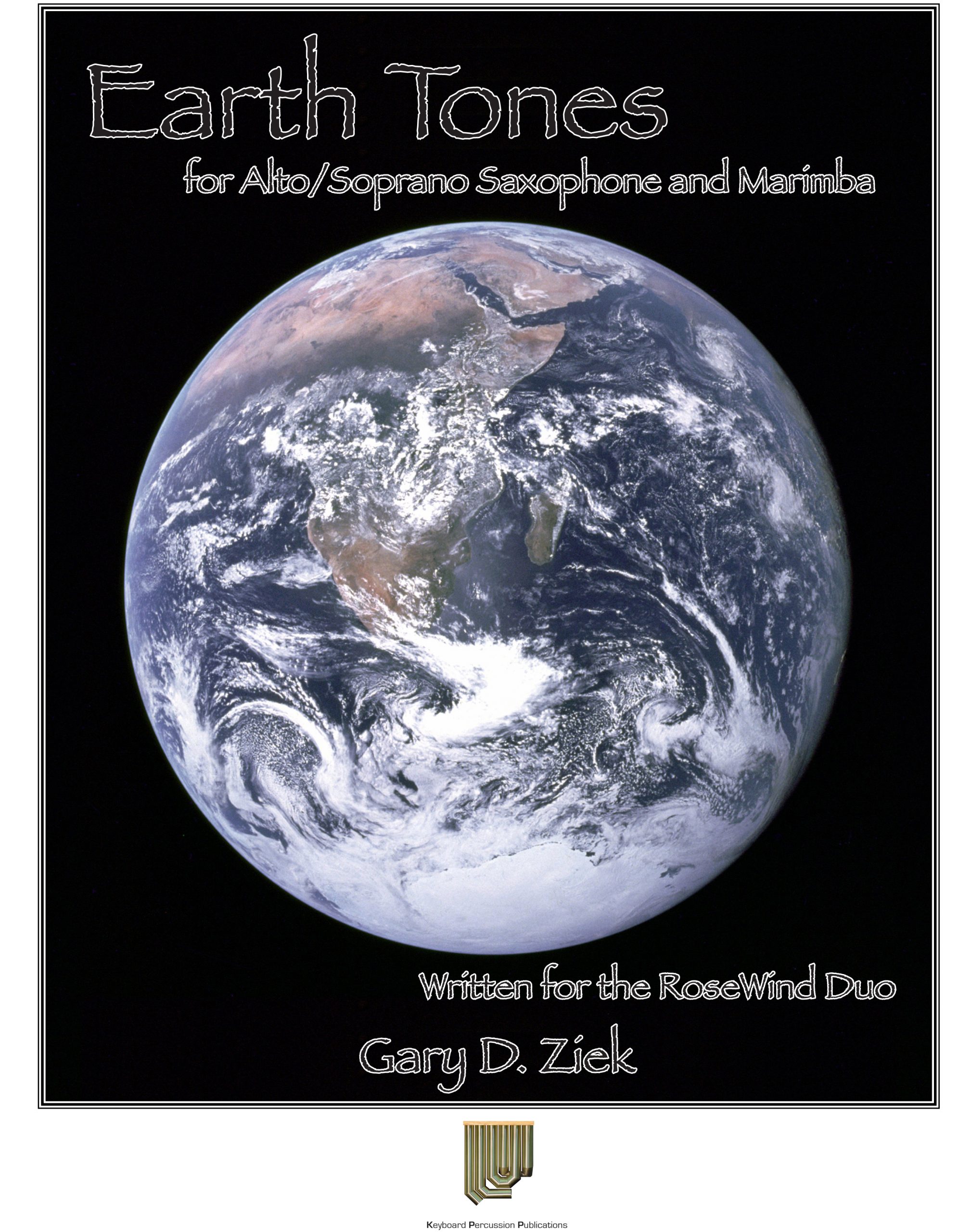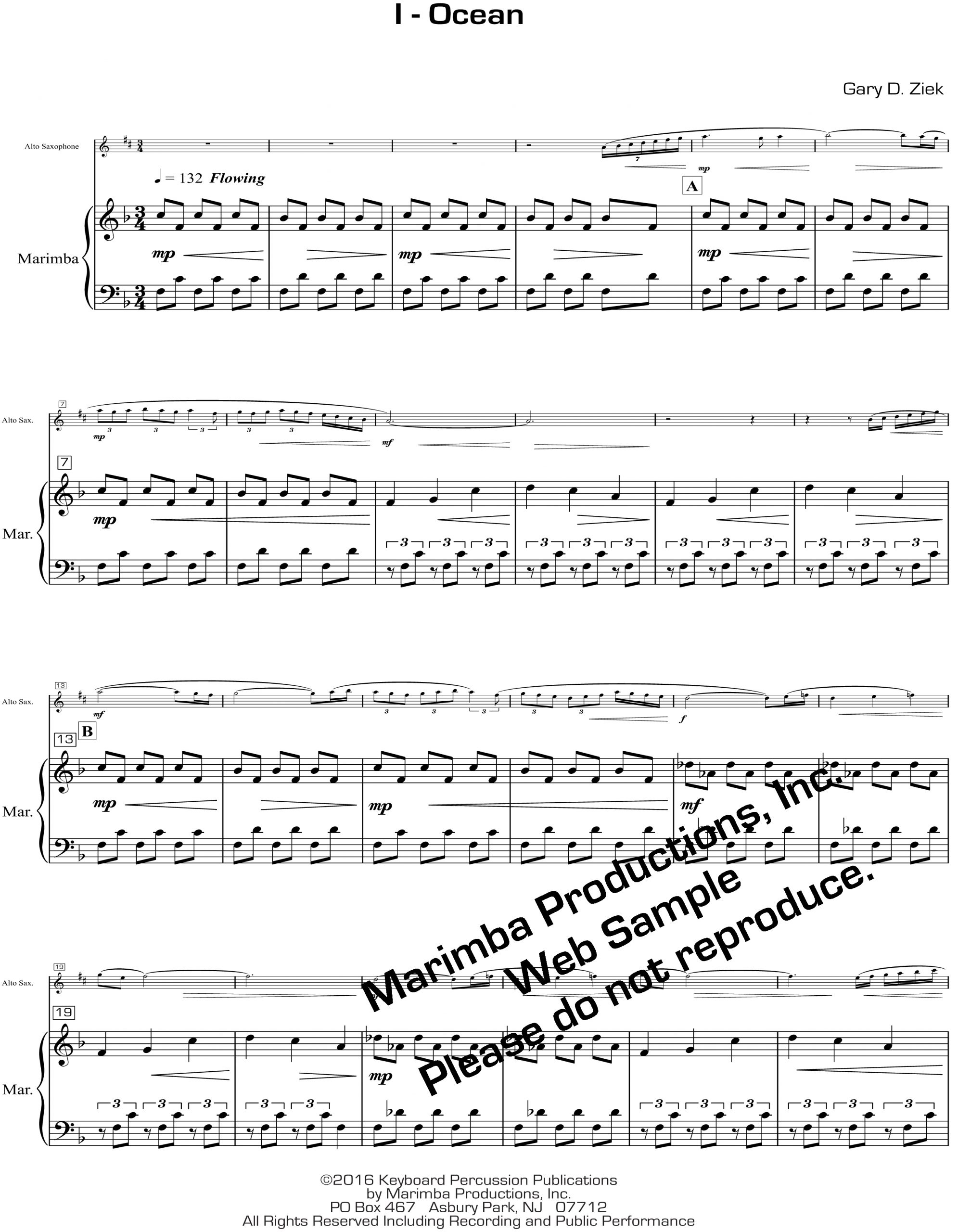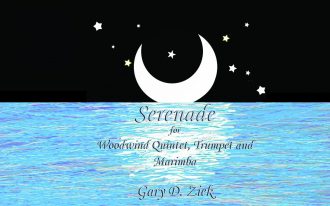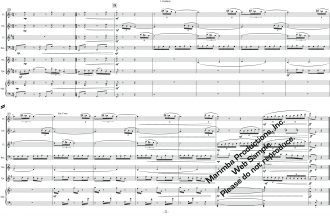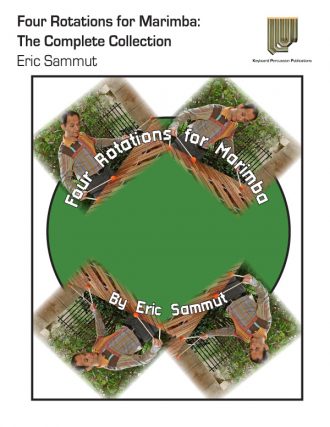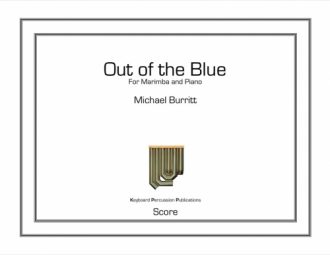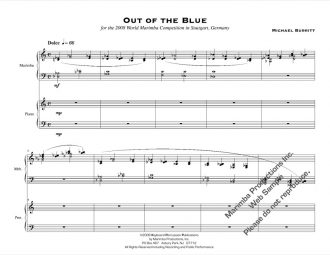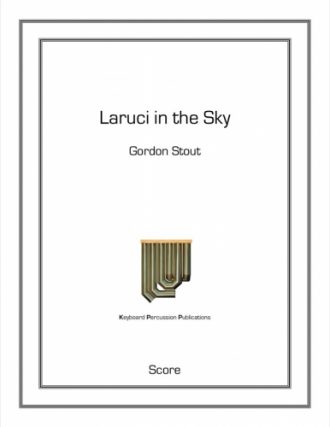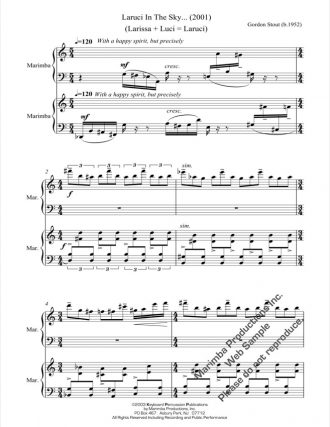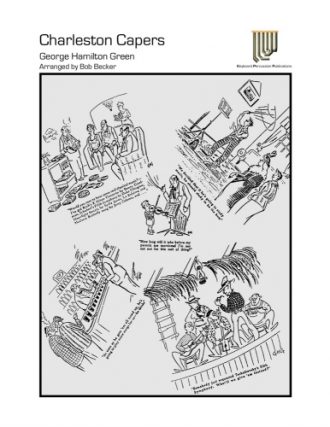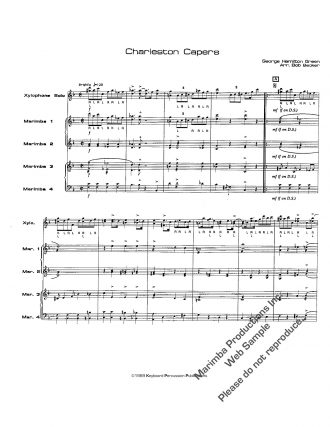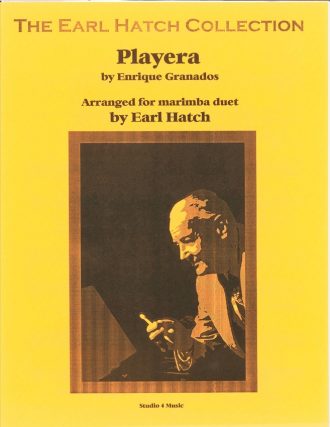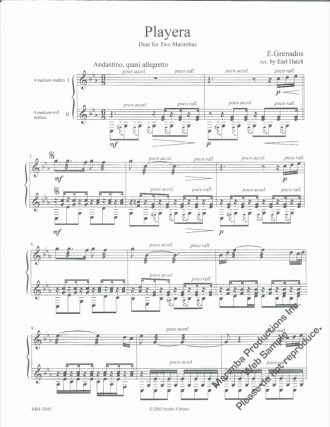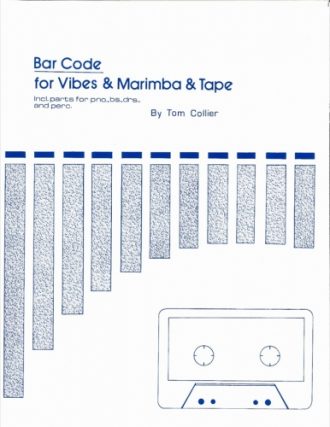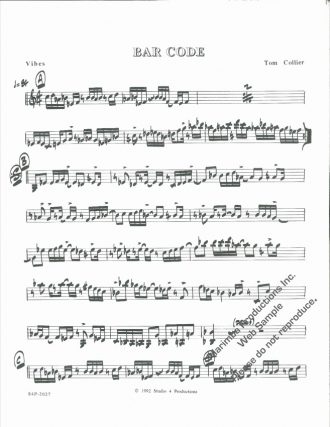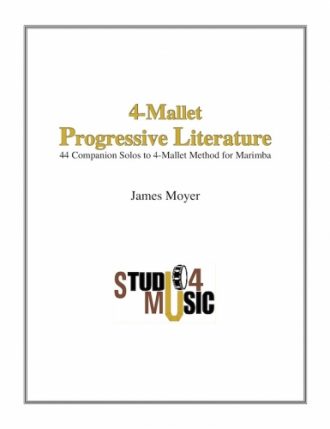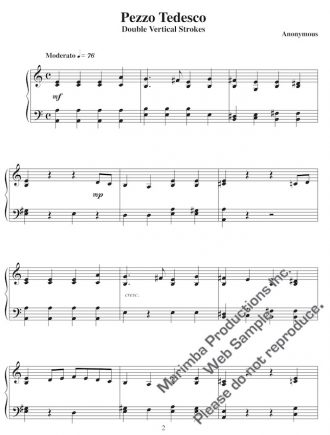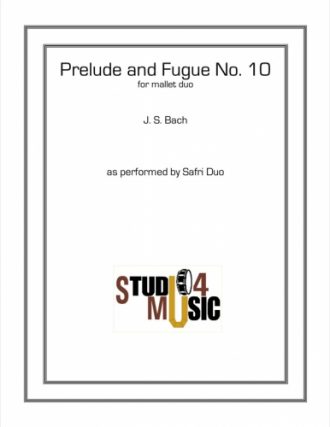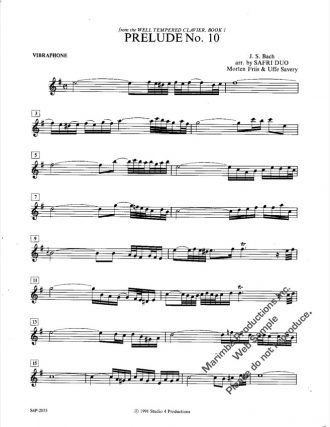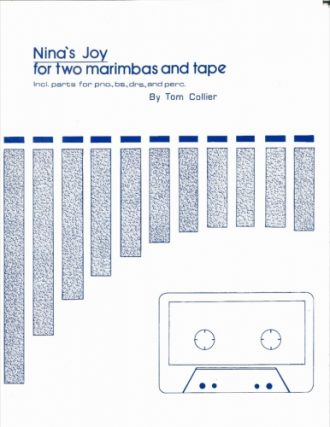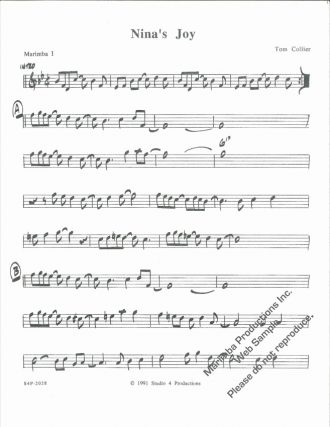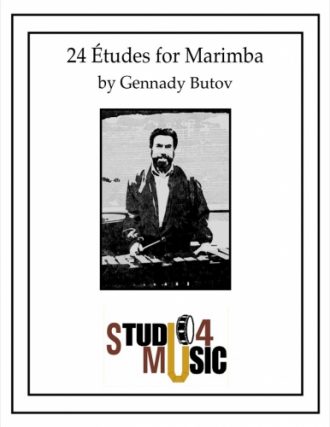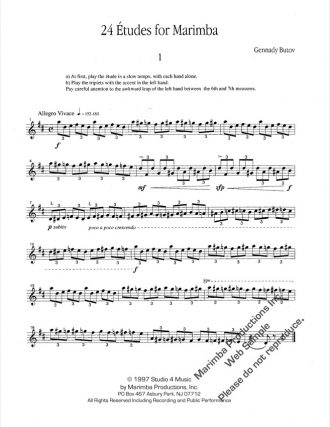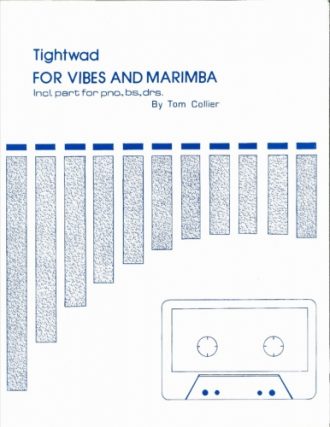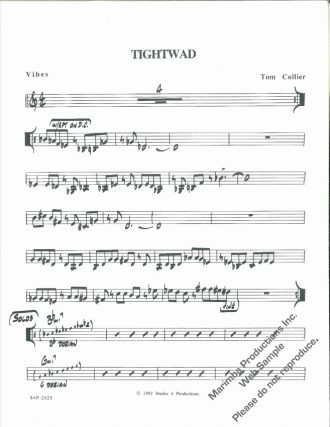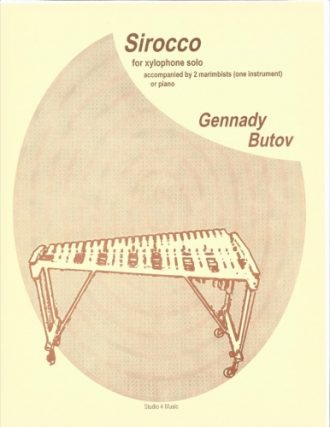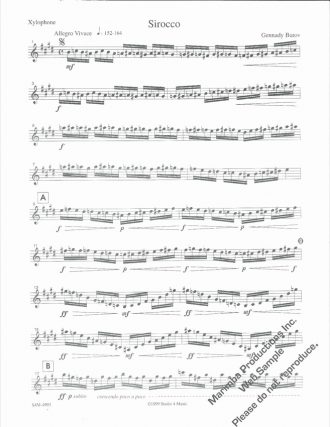Earth Tones was composed in 2011 for the RoseWind Duo (Clifford Leaman, saxophone and Scott Herring, marimba). It is written as a series of seven short descriptive movements, each portraying one of the diverse environments found on the planet Earth.
Movement 1, Ocean is in a flowing, undulating style, reflecting the endless movement of the tides, waves and currents of the ocean.
Movement 2, River begins with a single current of water, which builds to a furious torrent of notes in the saxophone. The raging rapids reside into a flowing waltz, portraying the eddies and gentle currents of a meandering stream. The torrent resumes and the movement drives to a furious conclusion.
Movement 3, Grasslands is gentle and flowing. The marimba and saxophone present a panorama of the vast grasslands of the Earth, with their wide open spaces and hypnotic interplay of grass, wind and light.
Movement 4, Desert is dry and sparse in character. Dry desert winds swirl about in a timeless manner, constantly sculpting the landscape.
Movement 5, Polar is austere, remote, and mysterious in character. These extreme areas of the Earth are distant, and the music moves at its own inexorable pace, reflecting the frigid winds, slowly moving glaciers and floating icebergs found in these regions.
Movement 6, Rain Forest, portrays an area brimming with life. This movement has a gentle groove, and features highly syncopated rhythms. The biodiversity of this area is alluded to by the “bird-calls” in the saxophone. The soprano saxophone part can be performed on the Bb clarinet if desired.
Movement 7, Volcano begins in a simmering manner. The simple chords and melody of the introduction lead to a section of great intensity. The melody undergoes a series of episodes, each more furious and complex than the one before it. These episodes require great virtuosity from both players, and build to an “explosive” conclusion.
In the April 2017 Percussive Notes, I had the pleasure of reviewing the Rosewind Duo recording that included this piece. One thing I liked about the variety of the recording was the different performance levels represented, and “Earth Tones” represents one of the intermediate-level pieces. This would be a great piece for a young duo. It is programmatic and easy on the ears for the players and the audience. It includes seven short movements that all sound like their earthy titles.
The four-mallet technique is moderately challenging, although I wish there was more consistency throughout the movements. For example, the third movement, “Grasslands,” includes an ostinato in the left hand centered around fifths. The right hand also has a fiarly easy ostinato with sixths, but in the middle, there are four bars of thirty-seconds that lay fairly idiomatically but, of course, are twice as fast as the rest of the movement. That may be a pretty big jump in technique for a younger student.
My favorite movement is VI, “Rain Forest,” where the soprano saxophone gets to play bird calls and other rainforest-like sounds. The marimba has a nice groove with consistent technique throughout. Any of the movements could be played independently, and they range in duration from two to four minutes each. This work could teach a young duo a lot about balance and chamber music, while filling a space on a sophomore or junior recital.
I have to shout out to the composer and publisher for the beautiful score. It has a black spiral binding, and both copies (one for the sax with smaller marimba print, and one for the marimba with smaller sax print) are very clear and easy to read. Thanks for making it easier on the perfomers to work and play!
— Julia Gaines, Percussive Notes — July 2017

